NBA legends: How much did their teams spend?

Ring culture dominates the GOAT debate when it comes to the NBA so we’re trying to add a bit of nuance to it with an exercise in which we look into the spending of the various teams in which league legends played. (Obviously, it’s a bit harder to win titles when your team’s owner is not spending big bucks).
We limited this exercise to the 23 players who made the NBA75 list and debuted after 1990 (which is as far as our salary archive goes) to get a fair gauge of how much the teams of legends were spending in relation to the rest of the league. We did that without factoring in the luxury tax, but rather just straight-up combining the salaries of the players for each team each year.
Below, we rank those 23 players based on much their teams spent relative to the league average during their time in the league.
1. Dirk Nowitzki
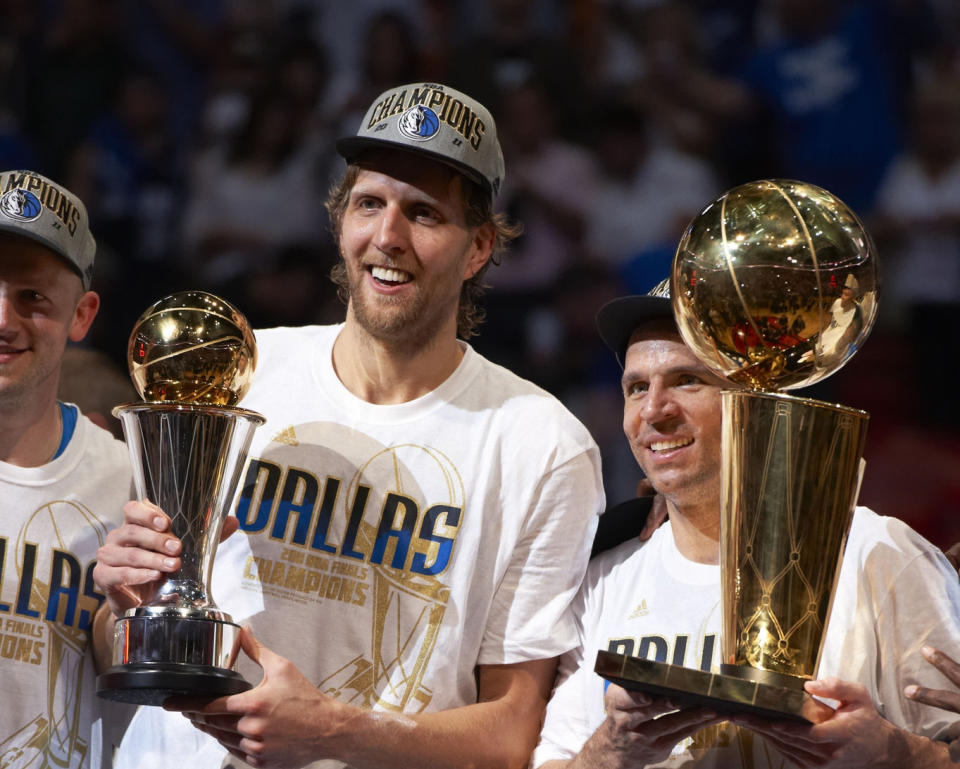
John W. McDonough /Sports Illustrated via Getty Images
Team salary expenses: 15.97 percent more than league average
Salary expenses in championship season: 26.48 percent more than league average
The Dallas Mavericks failed to surround Dirk Nowitzki with star power during his illustrious career, though, in hindsight, it wasn’t for lack of spending.
According to our data, the Mavericks spent more in player salaries than the league average every season between 2000-01 through 2014-15 and ranked Top 3 in salary expenses every year between 2001-02 and 2010-11, essentially Nowitzki’s prime.
In 2006-07, for example, when the Mavericks won 67 games in the regular season but were bounced in the first round of the playoffs, the team ranked second in the NBA in player salary spending. Nowitzki was actually the team’s second highest-paid player ($15.1 million) to Michael Finley ($16.1 million), while Eric Dampier earned $9.6 million and Jerry Stackhouse ($9.2 million).
All of those players ranked Top 55 in salary that year, so it’s clear the Mavericks were spending, just maybe not the most wisely, as evidenced by that playoff run.
With a player of Nowitzki’s all-time quality and with an owner in Mark Cuban who was clearly willing to spend, the fact that Dallas didn’t enjoy even more team success is disappointing, although they did at least win one ring.

2. Kobe Bryant

Mark J. Rebilas-USA TODAY Sports
Team salary expenses: 15.28 percent more than league average
Salary expenses in championship seasons: 14.91 more than league average
Unlike Nowitzki, Kobe Bryant was not one to take paycuts during his prime, something he can’t be faulted for. An all-time legend like Bryant deserved every penny he earned from the Los Angeles Lakers considering he finished his career as undoubtedly the second-best shooting guard ever.
However, with Bryant earning so much during his time in the NBA (even after his prime) and so much talent surrounding him, that made for pretty bloated Lakers’ payrolls, which oftentimes translated well into on-court success, with Los Angeles winning five championships during Bryant’s time there.
During Bryant’s Laker run, the franchise led the league in payroll four times. Another three times, they were Top 10 in salary expenses and failed to make the playoffs, with the majority of those instances taking place at the end of Bryant’s career.

3. Stephen Curry
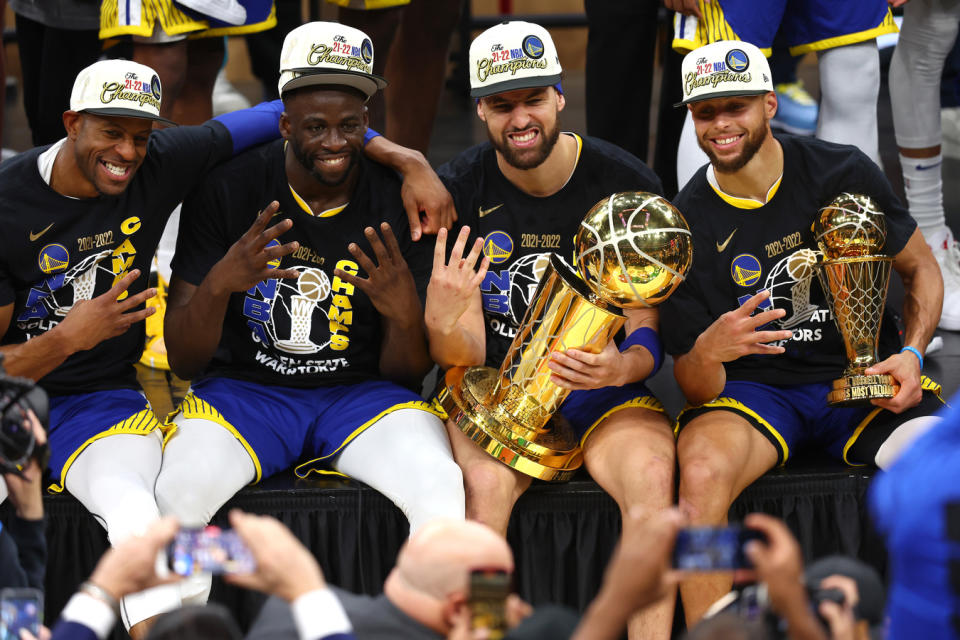
Adam Glanzman/Getty Images
Team salary expenses: 11.77 percent more than league average
Salary expenses in championship seasons: 14.79 percent more than league average
Back in 2012, on Halloween, in fact, Stephen Curry signed a four-year, $44 million rookie extension with the Golden State Warriors in what has gone done as one of the biggest bargain contracts in NBA history.
That bargain of a deal, which kicked in as Curry won two league MVPs and cemented himself as the greatest shooter ever, led directly to two championships for Golden State when the team ranked 14th league-wide in payroll.
In the Warriors’ first title run under Curry, the sharpshooting legend was the team’s fourth highest-paid player at $10.6 million, behind David Lee ($15.0 million), Andrew Bogut ($13.0 million) and Andre Iguodala ($12.3 million). In fact, Curry was the NBA’s 60th highest-paid player that season… while winning MVP and making 1st Team All-NBA that year.
It didn’t hurt that Klay Thompson was also an All-Star by then but still on his rookie deal and making $3.1 million.
So yes, although Golden State got some criticism about “buying” their 2021-22 championship behind the largest payroll in NBA history, the team has also won titles while being a middling club in salary spending thanks in part to that historically valuable Curry extension.

4. Shaquille O'Neal
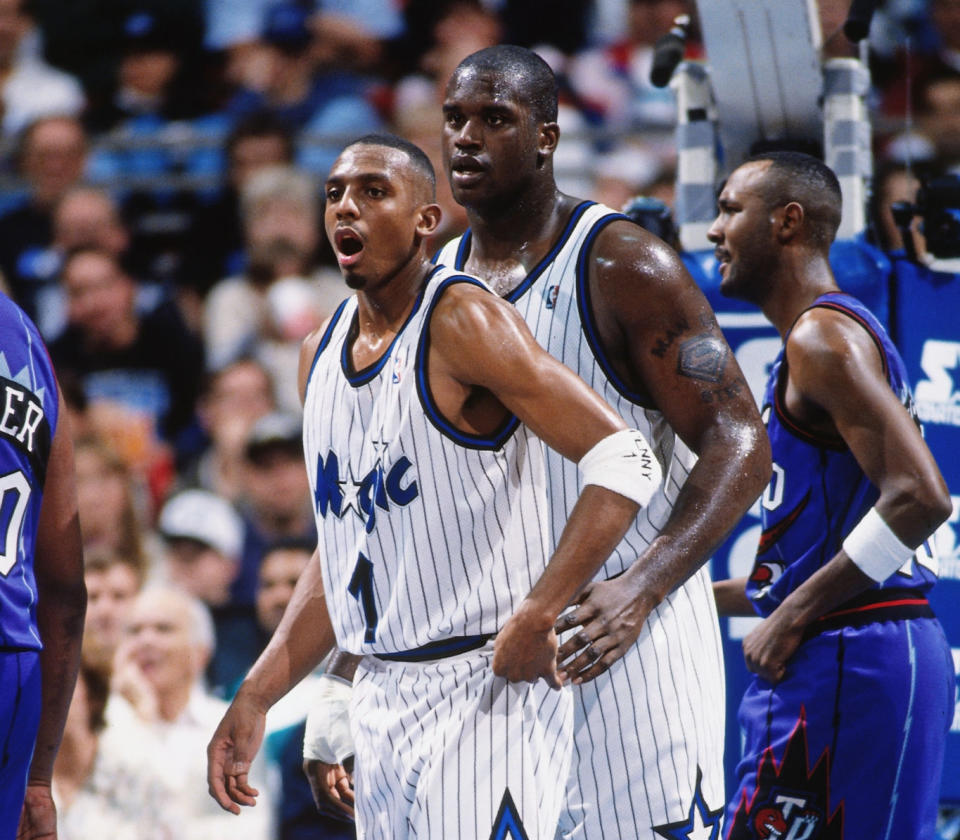
Barry Gossage/NBAE via Getty Images
Team salary expenses: 10.95 percent more than league average
Salary expenses in championship seasons: 8.02 percent more than league average
No one can ever fault the Lakers for cheaping out when it comes to salary, as we have our second L.A. legend in the Top 4 of this ranking, with Shaquille O’Neal teams spending 10.95 percent over the league average team payroll.
Of course, some of that comes from the non-Laker teams O’Neal played on, as the two final Orlando Magic teams that O’Neal suited up for ranked second in salary expenses, first in 1994-95 and then in 1995-96.
During that Finals run, the Magic had O’Neal ($4.8 million), the NBA’s sixth highest-paid player, and Penny Hardaway ($4.3 million), its seventh highest-paid player, as the team’s two pilars.
It was a shame neither of those teams wound up hoisting the Larry O’Brien trophy despite a small-market team in Orlando spending like that, as perhaps that would have meant O’Neal staying with the Magic throughout his prime and NBA history looking quite a bit different. But they did at least reach the Finals in the first of those two campaigns.
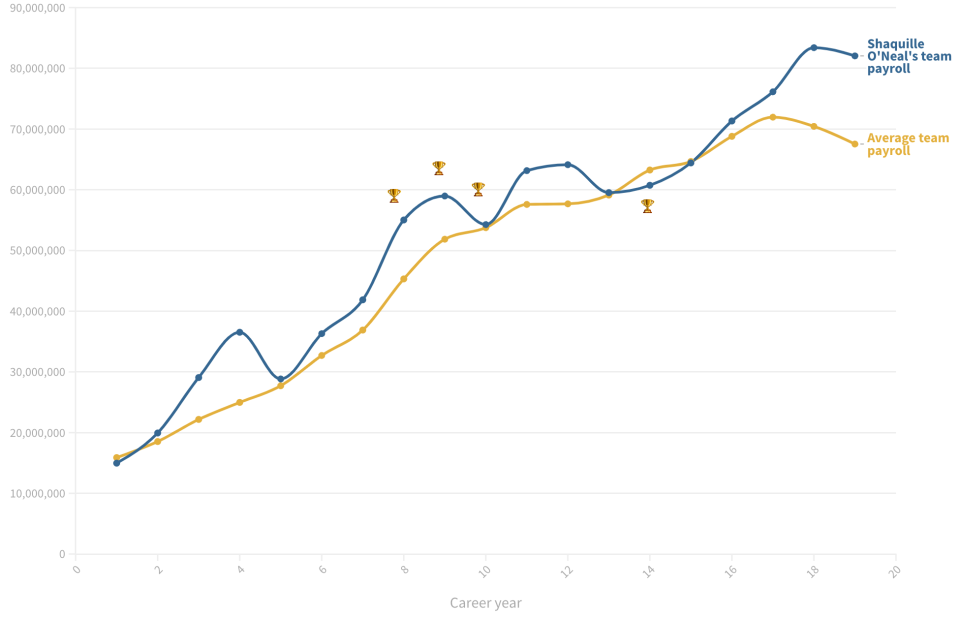
5. Jason Kidd
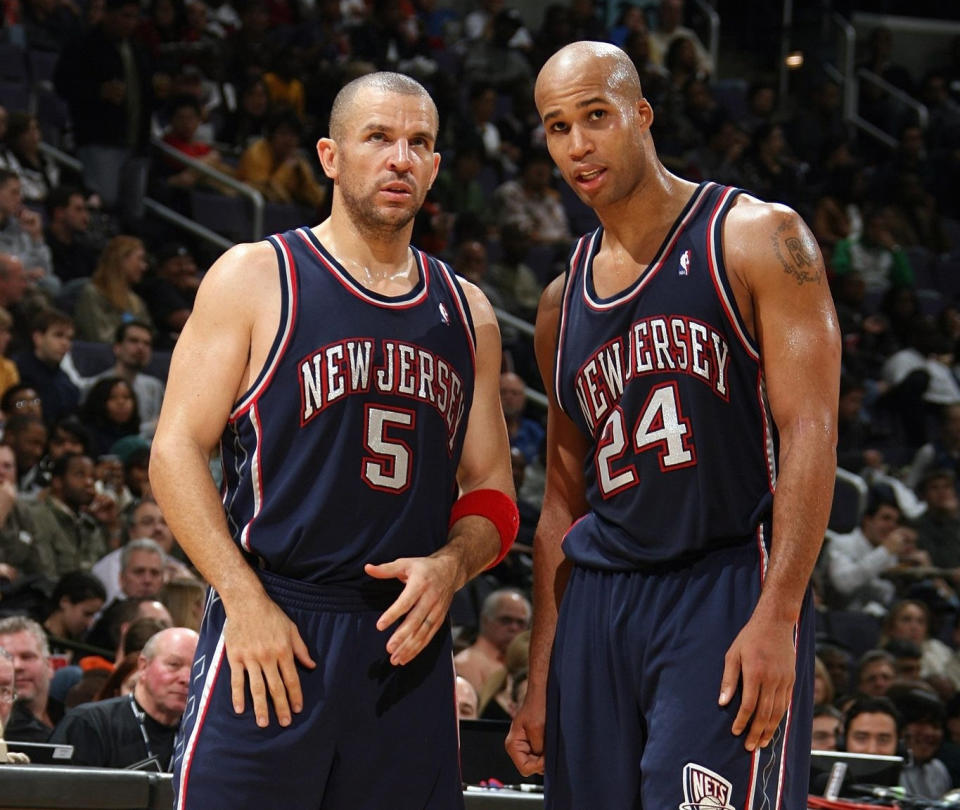
Ned Dishman/NBAE via Getty Images
Team salary expenses: 10.48 percent more than league average
Salary expenses in championship season: 26.48 percent more than league average
NBA Hall-of-Famer Jason Kidd, one of the league’s best point guards historically, finished his career with just one championship, which came as Nowitzki’s teammate in 2010-11, but he reached the Finals two other times and made the playoffs a preposterous 17 times.
And seeing now how often his teams were willing to spend at an elite level, that should come as no surprise.
The 2007-08 Mavericks team that Kidd finished the season with, for example, ranked first in salary that year, spending $101.7 million in player contracts that season vs. the league average of $68.8 million.
Kidd led that team in salary at $19.7 million with Finley in second at $18.6 million and Nowitzki in third at $16.4 million, all in the Top 15 in player salaries that year, with Kidd checking in at No. 4 league-wide.
As we said, Mark Cuban: certainly not afraid to spend.
What’s more, two other Dallas teams Kidd was on ranked second in salary spending in those respective years while another ranked third.
In total, six Jason Kidd teams ranked Top 5 in salary spending, something Kidd should feel lucky about, as many owners just don’t spend like that.

6. LeBron James

Ken Blaze-USA TODAY Sports
Team salary expenses: 9.76 percent more than league average
Salary expenses in championship season: 18.58 percent more than league average
With a player of LeBron James’ all-time ilk on the roster, it shouldn’t come as a shock that his teams have so often spent so heavily on player salaries considering James ranks No. 1 all-time not just in points, but also in all-time salary earned.
During James’ first four seasons with the Cleveland Cavaliers, the team never ranked higher than 17th in salary expenses, per our research, then spent way more once James’ max extension kicked in, with the team ranking fourth, third and fifth in player salaries before the four-time league MVP took his talents to South Beach.
Even so, it was the Cavs team that ranked 17th in player salaries in 2006-07 that reached the Finals out of that group, as James was making $5.8 million that year while making 2nd Team All-NBA.
That team had Larry Hughes as its highest-paid player ($13.4 million, No. 26 in the NBA), followed by Zydrunas Ilgauskas ($9.4 million), Drew Gooden ($6.7 million) and Eric Snow ($6.1 million) all earning more money than James.
Quite a roster James led the Finals there.
It was different once James returned to Cleveland for his second stint there, with the Cavaliers actually ranking first in salary expenses three separate times from 2015-16 to 2017-18, a stretch that saw them win one championship and reach two other Finals, paying the likes of Kyrie Irving and Kevin Love what they deserved, a much stronger roster of players closer to James’ greatness.
Money well-spent.
So far with the Lakers, James’ current team has yet to rank higher than fourth in player salary.
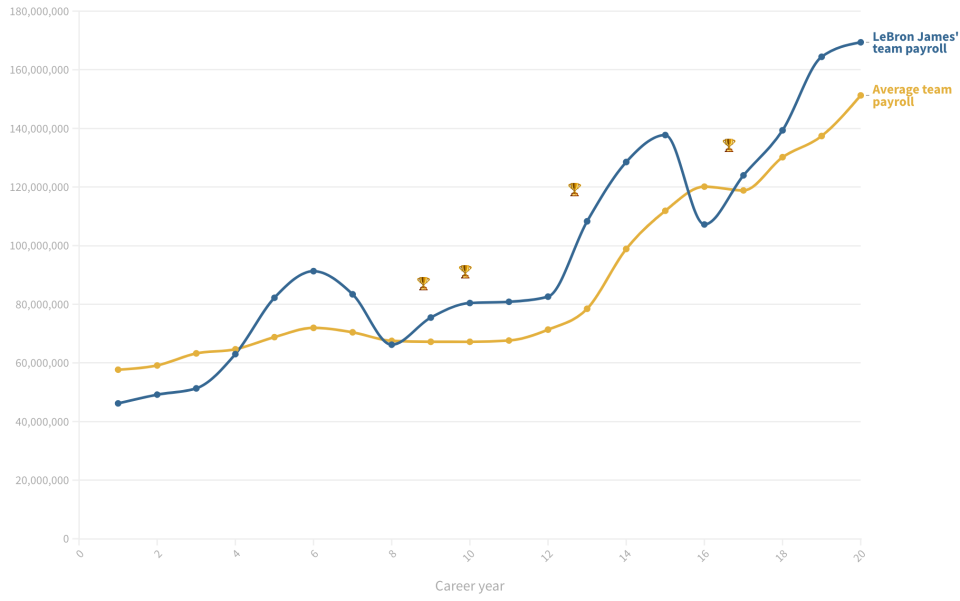
7. Kawhi Leonard

Harry How/Getty Images
Team salary expenses: 9.72 percent more than league average
Salary expenses in championship season: 4.02 percent more than league average
A player who has spent most of his career suiting up for contenders, Kawhi Leonard checks in at No. 7 in this exercise.
Right off the bat, Leonard entered the league on a San Antonio Spurs in the Top 10 in player salary expenses, which makes sense considering the Spurs were a contender paying the likes of Tim Duncan, Tony Parker and Manu Ginobili.
That the Spurs were able to win the final title of the Duncan-era dynasty had a lot to do with Leonard earning $1.9 million in 2013-14 while contributing enough to win Finals MVP. San Antonio was actually 19th in player salaries that year, though, as Duncan was making just $10.4 million, Parker $12.5 million and Ginobili just $7.0 million, outrageously cheap salaries, even accounting for inflation.
For comparison, the Los Angeles Clippers this season rank No. 1 in player salaries, with Leonard and Paul George earning a combined $85.0 million. Even Eric Gordon (at $19.6 million this season) is earning more than Parker and Ginobili did combined in 2013-14.
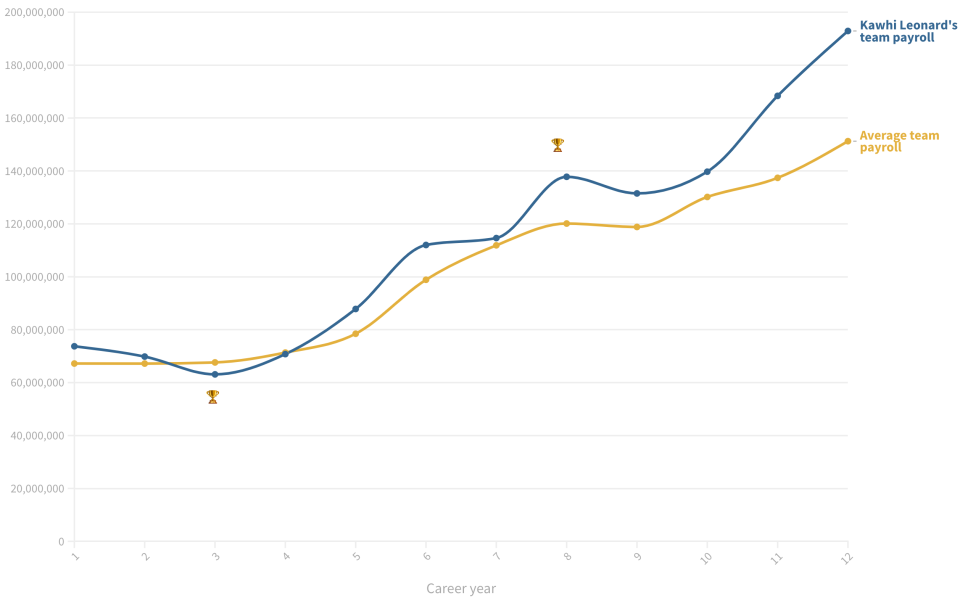
8. Steve Nash
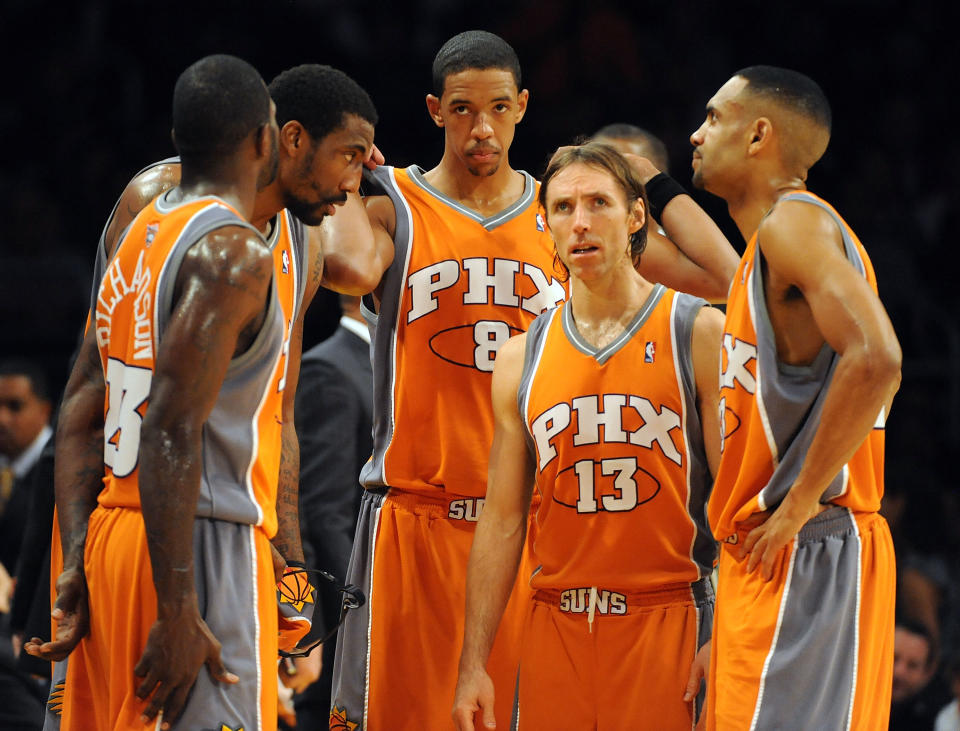
Harry How/Getty Images
Team salary expenses: 8.15 percent more than league average
Two-time league MVP Steve Nash had a fascinating career, taking a while to break out but eventually becoming the best point guard in the game for a multi-year span. He spent most of his career on playoff-level teams and had a few seasons suiting up for borderline contenders, though he was never able to even reach the Finals, let alone win a championship.
Still, it wasn’t for a lack of his teams trying, as Nash was often on clubs that spent more than most teams in player salaries. Nash was on eight different teams that ranked Top 5 in player salary expenses, with the 2012-13 Lakers ranking 1st in salaries. (We gave Los Angeles credit for spending money to win titles. We never said they always spent it wisely.)
Nash was actually just the fourth highest-paid player on that team, earning $8.9 million, though that makes sense considering the brilliant floor general was on his last legs in the NBA and no matter the investment, he had little chance to win big at that point. Bryant led the team at $27.9 million with Dwight Howard making $19.3 million and Pau Gasol at $19.0 million.
That team won 45 games and was swept out of the first round of the playoffs by the Spurs, by the way.
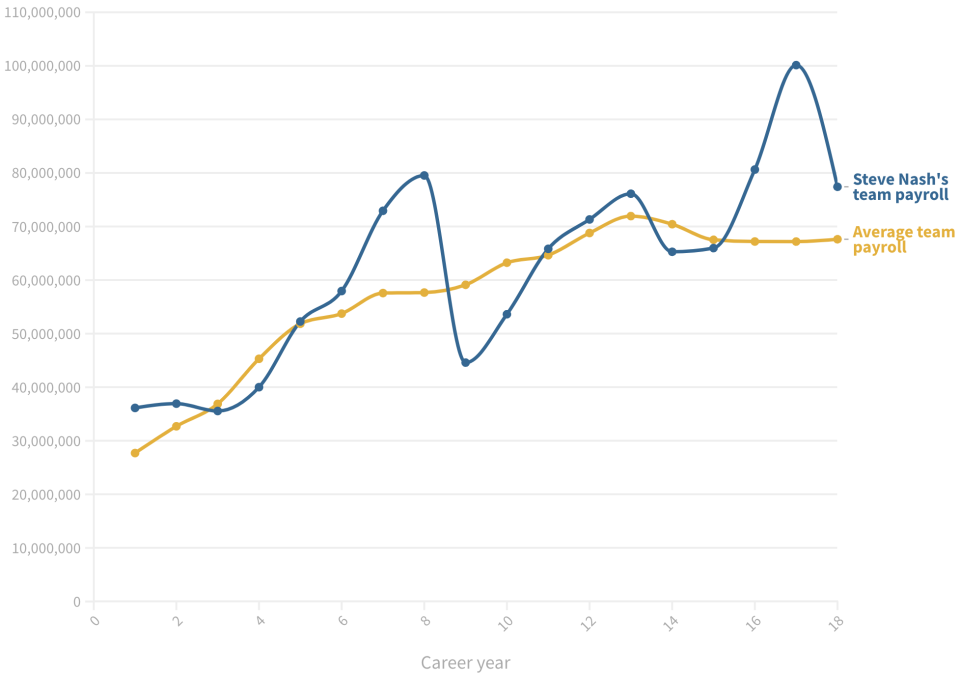
9. Paul Pierce
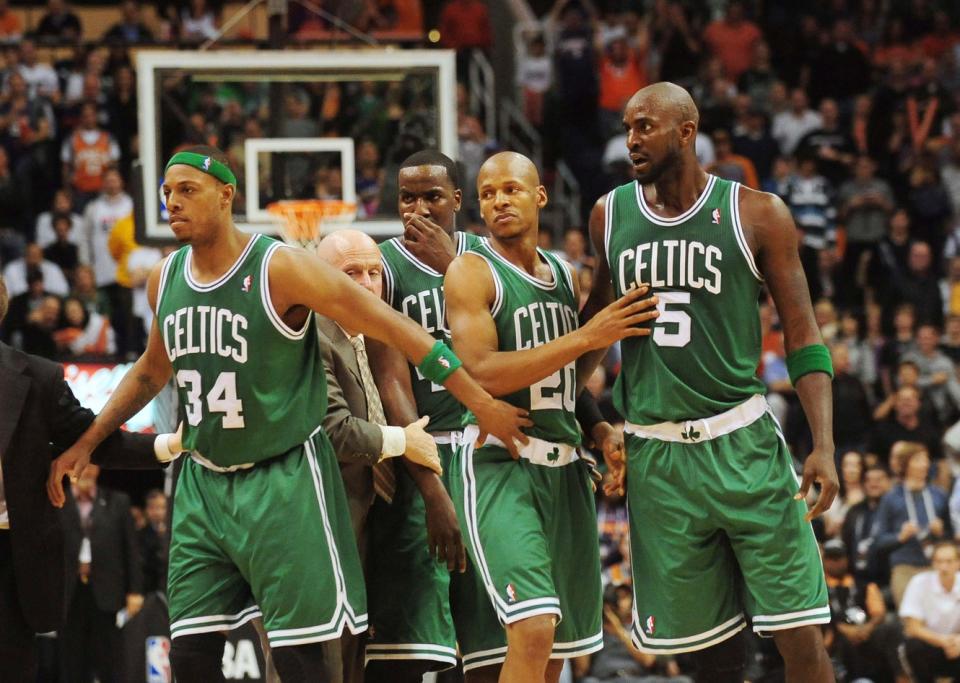
Jennifer Stewart-USA TODAY Sports
Team salary expenses: 8.06 percent more than league average
Salary expenses in championship season: 8.30 percent more than league average
For the first nine years of Paul Pierce’s career, the Boston Celtics legend was never on a team that ranked higher than 10th in player salaries. Perhaps not so coincidentally, Pierce and the Celtics only made the playoffs four times in that stretch, though they did get to the Eastern Conference Finals in 2001-02, which speaks to Pierce’s now-underrated greatness.
That all changed of course when Boston acquired Kevin Garnett and Ray Allen to form one of the best Big 3s in NBA history. For the next six seasons Pierce was in Boston, the team ranked Top 6 in player salaries every single year.
What’s interesting is that Pierce was only on one team that ranked first league-wide in salaries, in 2013-14 with the Brooklyn Nets. That team had five players earning eight-figure salaries, led by Joe Johnson at $21.5 million, followed by Garnett at $18.5 million and Pierce at $15.3 million.
That team went 44-38 and was bounced in the second round of the playoffs.

10. Dwyane Wade

Chris Nicoll-USA TODAY Sports
Team salary expenses: 6.99 percent more than league average
Salary expenses in championship season: 9.33 percent more than league average
The Heat won their first championship in 2005-06 with Wade still on his rookie-scale salary and making just $1.9 million… while averaging 27.2 points, 5.7 rebounds, 6.7 assists and 1.9 steals, earning All-Star and 2nd Team All-NBA honors and eventually winning Finals MVP. As a whole, that Heat team was just 15th in player salaries, with O’Neal leading the way at $20.0 million but no other player earning more than the $7.6 million earned by Jason Williams.
That has to be one of the biggest bargains of all time, salary-wise, for a team as a whole but especially for Wade.

11. Kevin Garnett
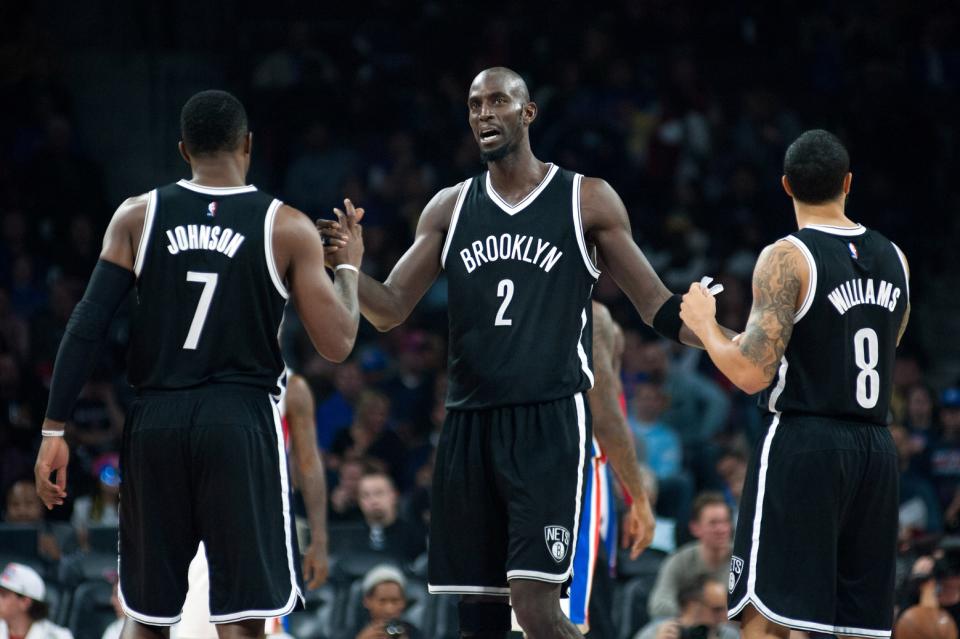
Tim Fuller-USA TODAY Sports
Team salary expenses: 6.41 percent more than league average
Salary expenses in championship season: 8.30 percent more than league average
For the first six seasons of Kevin Garnett’s career, the Minnesota Timberwolves never ranked higher than 16th in salary spending, despite Garnett having a big extension kick in by his fourth season. That makes it more clear why Garnett was fed up by the Timberwolves by the time he left in the 2007-08 season.
For his entire time in Minnesota, the Wolves never ranked higher than fourth in salary expenses, which happened in 2003-04. That year, Garnett earned $28.0 million, with his second highest-paid teammate being Latrell Sprewell at $13.5 million, followed by Wally Szczerbiak at $8.0 million. Minnesota actually had a huge bargain that year in the form of Sam Cassell, an All-Star and 2nd Team All-NBAer that season earning just $5.1 million.
That Timberwolves team would get to the Western Conference Finals, no surprise considering Garnett’s Hall-of-Fame level and Cassell’s bargain deal.

12. Kevin Durant
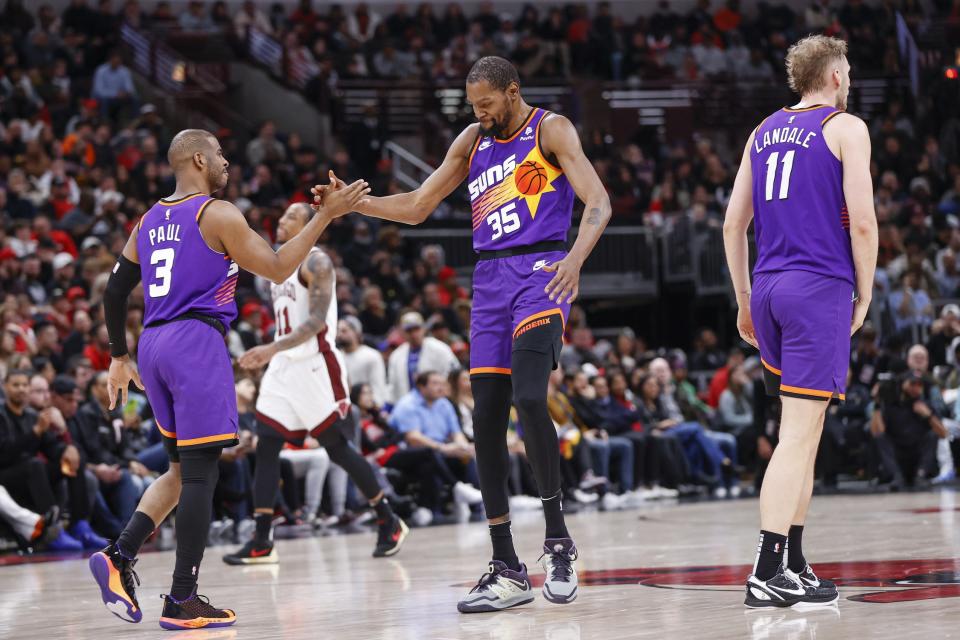
Kamil Krzaczynski-USA TODAY Sports
Team salary expenses: 6.36 percent more than league average
Salary expenses in championship seasons: 12.87 percent more than league average
Future Hall-of-Fame Kevin Durant has gotten a lot of help from his teams throughout his career. From 2017-18 through 2021-22, a five-year stretch, Durant was on teams ranked second in salary expenses – between the Warriors and Nets – four times
For the first five seasons of his career, the Oklahoma City Thunder never ranked higher than 18th in salary spending. It helped immensely that Russell Westbrook and James Harden were still on their rookie deals at the time. In the year OKC made the Finals. they earned $5.1 million and $4.6 million, respectively. Kendrick Perkins was actually the team’s second best-paid player that year at $7.1 million, behind only Durant’s $15.5 million.
That the Thunder chose to trade Harden the following offseason rather than commit a max extension to him was probably the beginning of the end for Durant’s time with the Thunder.

13. Russell Westbrook
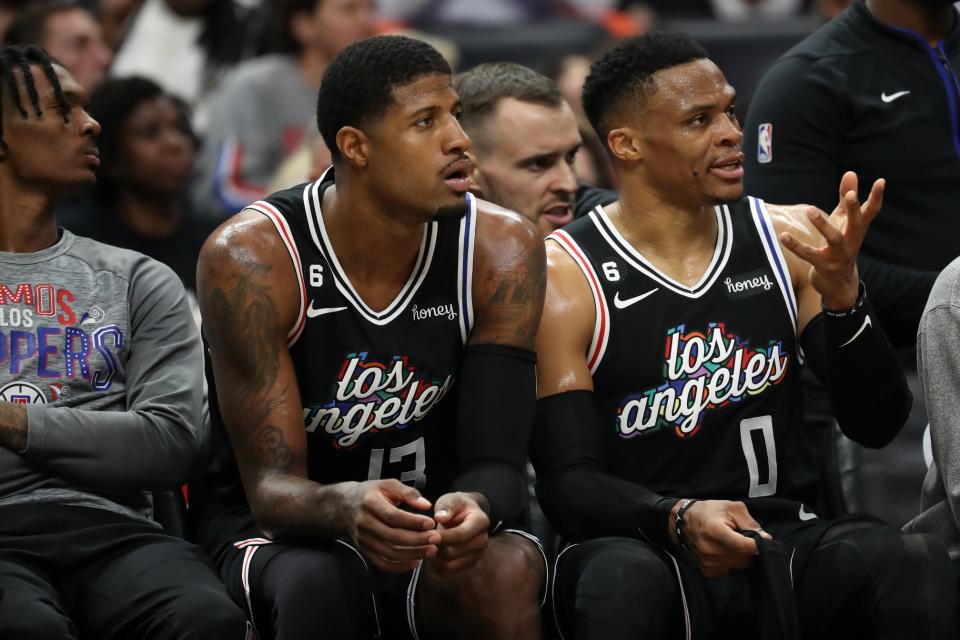
Kiyoshi Mio-USA TODAY Sports
Team salary expenses: 5.85 percent more than league average
Speaking of Westbrook, he has also been on some teams that paid a lot in player salaries.
The current Clippers team Westbrook finds himself on, for example, ranks first in player-salary expenses, though the team is built around Leonard and Paul George as opposed to around Westsbrook.
For all the flak small-market teams get for not spending – and don’t get it mistaken, trading Harden was a cost-cutting mistake by Oklahoma City – the Thunder did spend at a high level during Westbrook’s prime, ranking third in player salaries three times over four years from 2015-16 through 2018-19.
In the first of those seasons, 2015-16, Durant was still around and helped the Thunder reach the Western Conference Finals with Westbrook. In the other two seasons, Oklahoma City was unable to get out of the first round despite paying Westbrook, George and Steven Adams of all people a lot of money. Even Dennis Schroeder ($15.5 million) and Andre Roberson ($10 million) were making eight-figure salaries on that Thunder team.
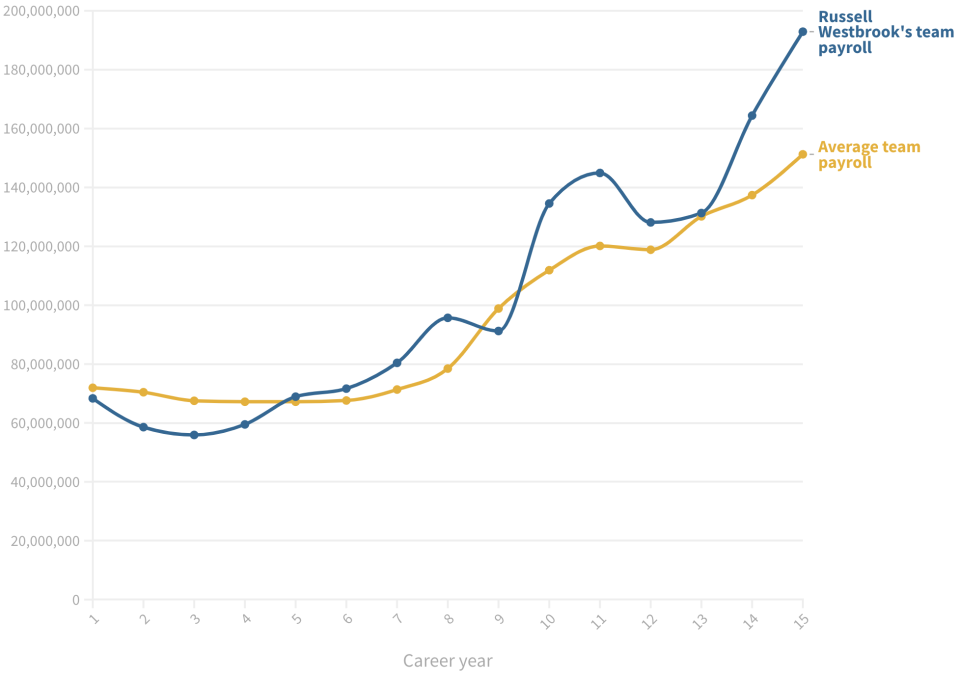
14. Anthony Davis

Ron Jenkins/Getty Images
Team salary expenses: 5.84 percent more than league average
Salary expenses in championship season: 4.33 percent more than league average
Anthony Davis’ teams have never ranked higher than fourth in player salary expenses, with six of Davis’ teams ranking outside of the Top 10 in that statistic.
Of course, that was a bigger problem when Davis played for the New Orleans Pelicans, as the Lakers do spend at a higher level than most teams. The Pelicans ranked Top 10 in player salaries just twice during Davis’ seven years there, with New Orleans ranking 20th in salary expenses during the superstar’s final season as a Pelican in 2018-19.
Davis was even the second highest-paid player on the team that year, making $25.4 million to Jrue Holiday’s $26.6 million. Solomon Hill was the team’s third best-paid player that year at $12.8 million, E’Twaun Moore fourth at $8.8 million.
Is it any surprise that Davis wanted out by that point?
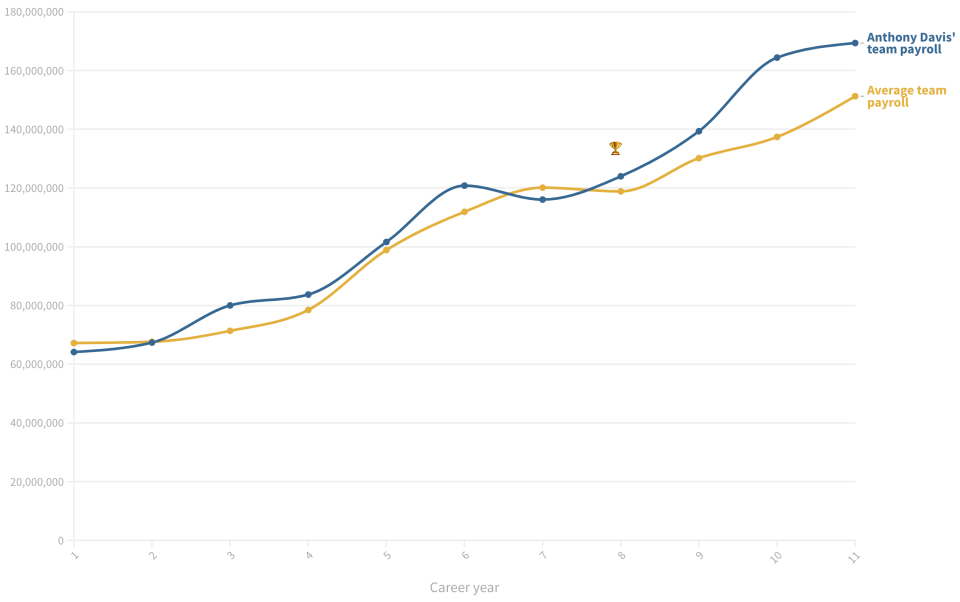
15. Carmelo Anthony

Joe Camporeale-USA TODAY Sports
Team salary expenses: 4.84 percent more than league average
Although Carmelo Anthony is remembered much more fondly for his individual success rather than team success, his teams still spent higher than the league average throughout his career.
The 2013-14 New York Knicks were particularly all-in, ranking second in player salary expenses league-wide that season. The problem is, a lot of the money was going to players who weren’t matching the value.
Amare Stoudemire, for example, was the team’s highest-paid player that season at $21.7 million, earning more than Anthony’s $21.5 million, but was well past his prime at that point, averaging just 11.9 points that campaign and missing 16 regular-season games as the Knicks went 37-45, missing the playoffs.
Anthony splitting his prime between the small-market Denver Nuggets and the usually poorly-run Knicks hurt his chances of enjoying more team success when he was one of the league’s best scorers for many years.
At the same time, the Nuggets did go for it in 2007-08, ranking third in player salaries with Anthony and the player coming up next on this list, a year that saw them win 50 games in the regular season before getting bounced in the first round of the playoffs.
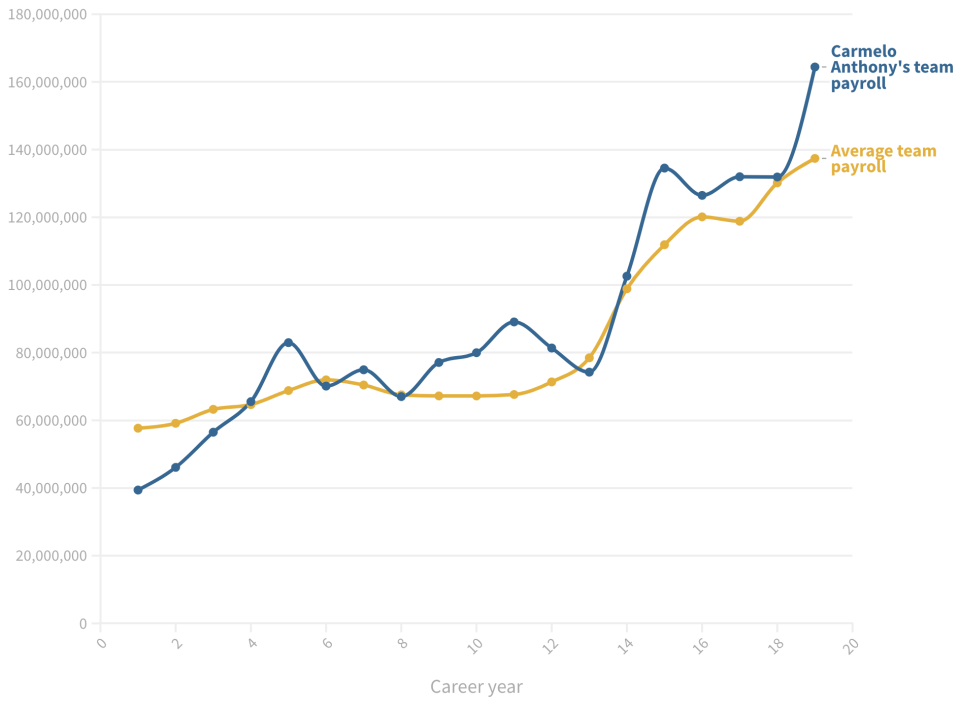
16. Allen Iverson

Jeff Gross/Getty Images
Team salary expenses: 4.09 percent more than league average
Hall-of-Fame point guard Allen Iverson was on six teams throughout his career that ranked Top 5 in player salaries, and nine that sat in the Top 10.
His 2000-01 Philadelphia 76ers squad that reached the Finals, however, ranked just 16th in player-salary expenses. Iverson led the way at $10.1 million that year, with Theo Ratliff (12.4 points per game) second at $7.8 million, Matt Geiger (6.1 points per game) third at $7.5 million and Tyrone Hill (9.6 points per game) fourth at $7.3 million.
Iverson deserves to make the Hall of Fame for a second time for dragging that roster to the Finals in 2001 and taking a game for the dynasty Lakers in the championship series.

17. Chris Paul
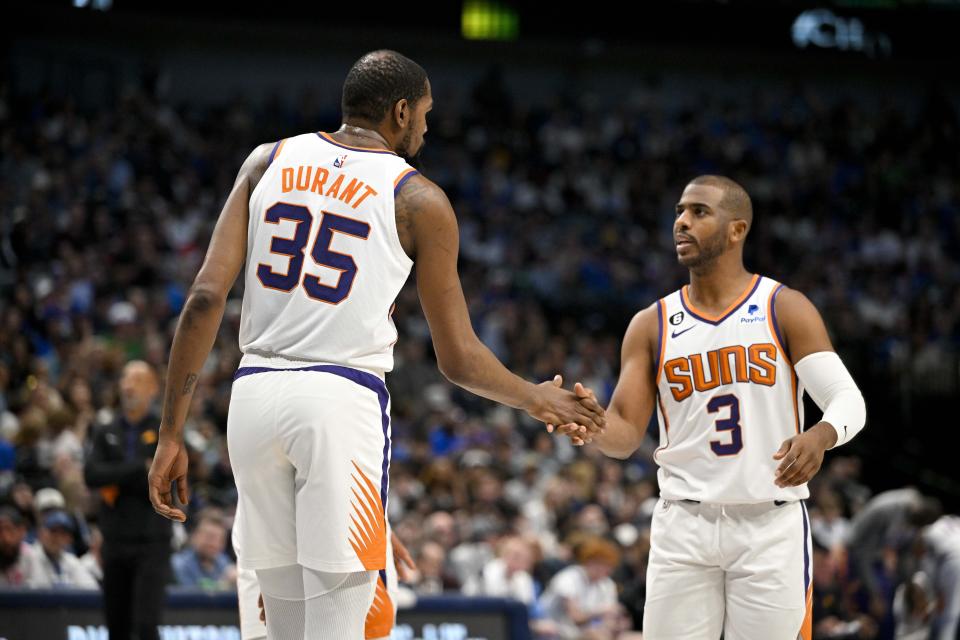
Jerome Miron-USA TODAY Sports
Team salary expenses: 2.36 percent more than league average
For the first six years of Chris Paul’s career in New Orleans, his teams never ranked higher than 12th in salary expenses, with the team ranking as low as 29th during that span, which took place in Paul’s rookie season.
The Clippers during Paul’s tenure were more serious about spending, as the team ranked second, second and third in player salaries during Paul’s final three seasons there. In 2016-17, Los Angeles had Paul, Blake Griffin and DeAndre Jordan all earning more than $20.0 million that year.
The team failed to get out of the first round of the postseason that year, as it was around the end of the fun Lob City Clippers era, with Paul getting traded to the Rockets next.
Paul was on one team that ranked first league-wide in player salaries, surprisingly with the Thunder in 2019-20. That season, Paul ranked second among all players in salary, earning an astronomical $38.5 million. The Thunder also had Steven Adams making $25.8 million that year and Danilo Gallinari earning $22.6 million.
They also lost in the first round of the playoffs.

18. Ray Allen
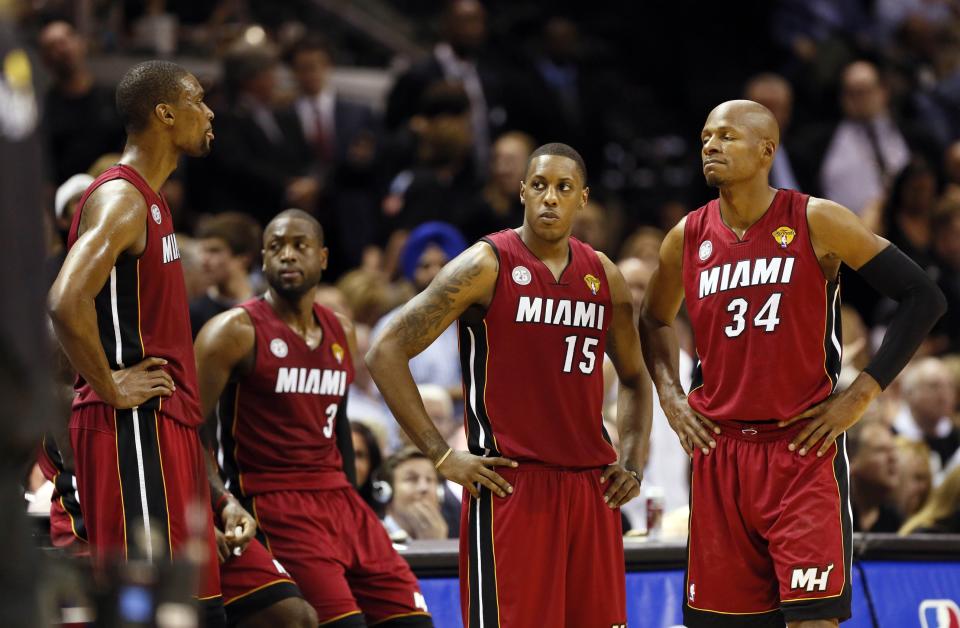
Soobum Im-USA TODAY Sports
Team salary expenses: 1.58 percent more than league average
Salary expenses in championship season: 13.99 percent more than league average
If it wasn’t memorable that Ray Allen spent the last seasons of his career playing for contenders, how’s this for a stat?
Over the last seven seasons of Allen’s career split between Boston and Miami, the sharpshooting legend played for teams that all ranked in the Top 6 in player salary expenses, peaking at third in his last two years with the Heat.
All that spending did lead to team success, as Allen was actually the bargain contract on many of those teams. In 2012-13, when Allen hit arguably the biggest shot in NBA history in Game 6 of the 2013 Finals, Allen was making $3.1 million, being the ninth highest-paid player on the Heat that season.
Talk about a bargain considering what would happen in the playoffs that year.
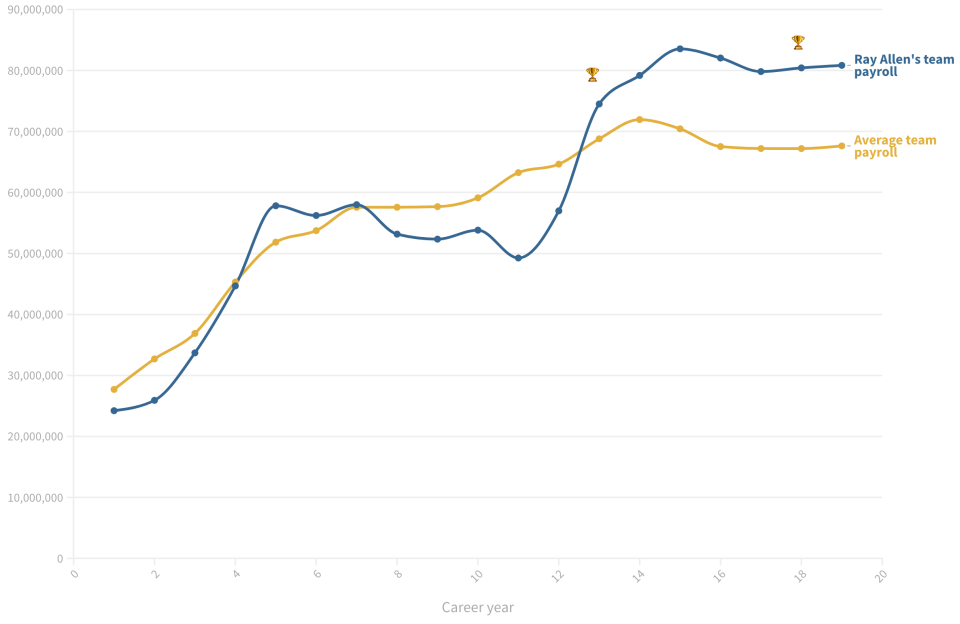
19. Giannis Antetokounmpo

Kelley L Cox-USA TODAY Sports
Team salary expenses: 1.02 percent more than league average
Salary expenses in championship season: 4.96 percent more than league average
In the first four seasons of Giannis Antetokounmpo’s career, the Bucks ranked 29th, 29th, 18th and 17th in player salaries. They actually made the playoffs in that second year, a solid coaching job by current Mavericks head coach Jason Kidd, considering it’s not exactly easy to spend that little on player salaries and still make the playoffs.
Of course, with Antetokounmpo now on a max salary, the spending has gone up in Milwaukee, as the Bucks have ranked Top 7 in player salaries in five of the last six seasons, with one championship to show for it.
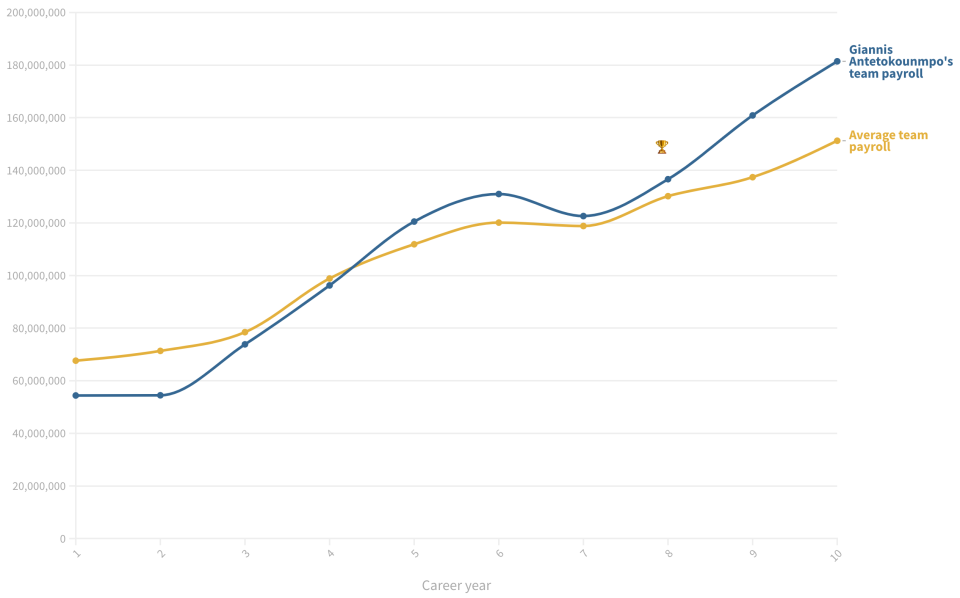
20. James Harden
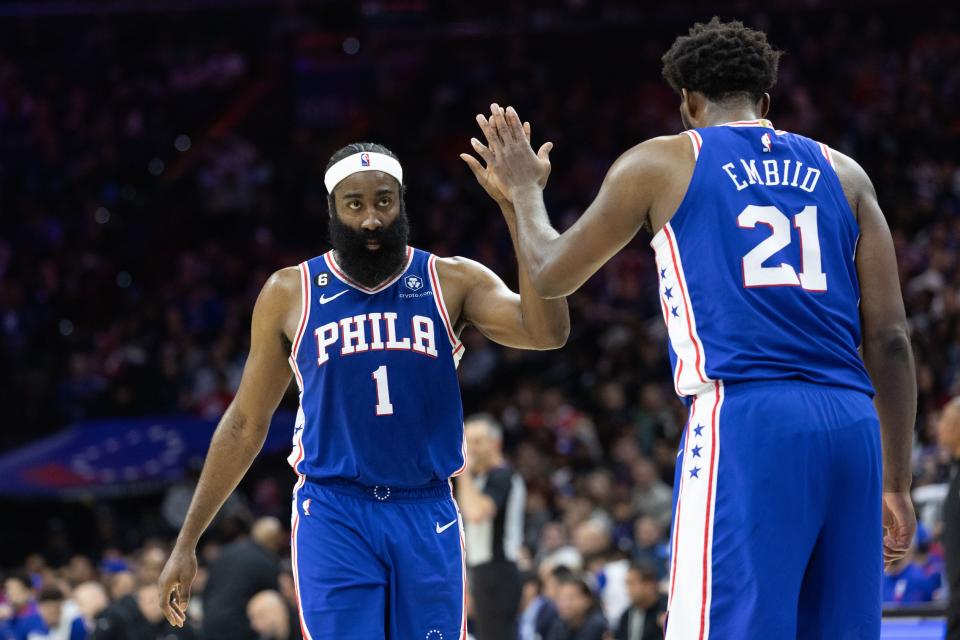
Bill Streicher-USA TODAY Sports
Team salary expenses: 0.64 percent more than league average
James Harden gets a lot of flak for lack of playoff success but to say one thing in his defense, his teams haven’t quite broken the bank as the squads of other superstars have done.
For Harden’s first five seasons, the Thunder and Rockets ranked 28th, 25th, 21st, 30th and 25th in player salary expenses.
That season where the Rockets ranked dead last in salary expenses, 2012-13, was the final year of Harden’s rookie deal. He earned $5.8 million that season, second on the team behind Francisco Garcia ($6.1 million) and just barely over Jeremy Lin ($5.0 million). While earning that amount of money, Harden was an All-Star and 3rd Team All-NBAer while somehow leading that Rockets roster to the playoffs, where they would lose in the first round.
The Nets did rank second in player salaries twice while Harden was there, though we all remember how that played out.
Even the current Philadelphia 76ers rank 15th in player salaries, which is surprising considering Harden is making $33 million, Joel Embiid is at $33.6 million and Tobias Harris of all people is earning $37.6 million to lead the team in salary, though the fact Harden took a pay cut to help the team build a contender around him and Embiid has a lot to do with the Sixers ranking that low in salary spending.

21. Tim Duncan

JEFF HAYNES/AFP/Getty Images
Team salary expenses: 0.63 percent more than league average
Salary expenses in championship season: 7.09 percent less than league average
The fact that the Spurs were the unquestioned No. 1 team during Tim Duncan’s career while spending the league average in salaries speaks to how good Duncan was (arguably the greatest power forward ever) and what a great job San Antonio did of putting together awesome squads without the deep pockets of other NBA franchises.
It also helped that they had low-maintenance stars willing to take pay cuts for more team success.
As we discussed in the Leonard section, the 2013-14 Spurs team ranked 19th league-wide in salary and still won a championship that year. Leonard being on his rookie deal then didn’t hurt but still, that’s quite the feat.
The Spurs’ 2004-05 championship team ranked even lower in salary, sitting 24th in player salary expenses that year.
Duncan led that team in salary, making $14.3 million (21st league-wide in salary while making 1st Team All-NBA and winning Finals MVP), with Ginobili second at $6.6 million (79th in salary that season despite being an All-Star) and Radoslav Nesterovic third at $6.2 million.

22. Damian Lillard

Troy Wayrynen-USA TODAY Sports
Team salary expenses: 0.87 percent less than league average
The first player on this list whose teams have spent historically less than the league average, Damian Lillard has been on two Blazers teams that ranked second league-wide in salary and one that sat sixth. However, besides that, no other Portland team during the Lillard era has ranked in the Top 10 in payroll.
In fact, five of Lillard’s Blazers teams have ranked bottom 10 in player salary expenses, including the last two.
This season, Portland ranks 22nd in salaries with Lillard making $42.5 million (tied for seventh among all players in salary), Anfernee Simons earning $22.3 million and Jerami Grant at $21.0 million.
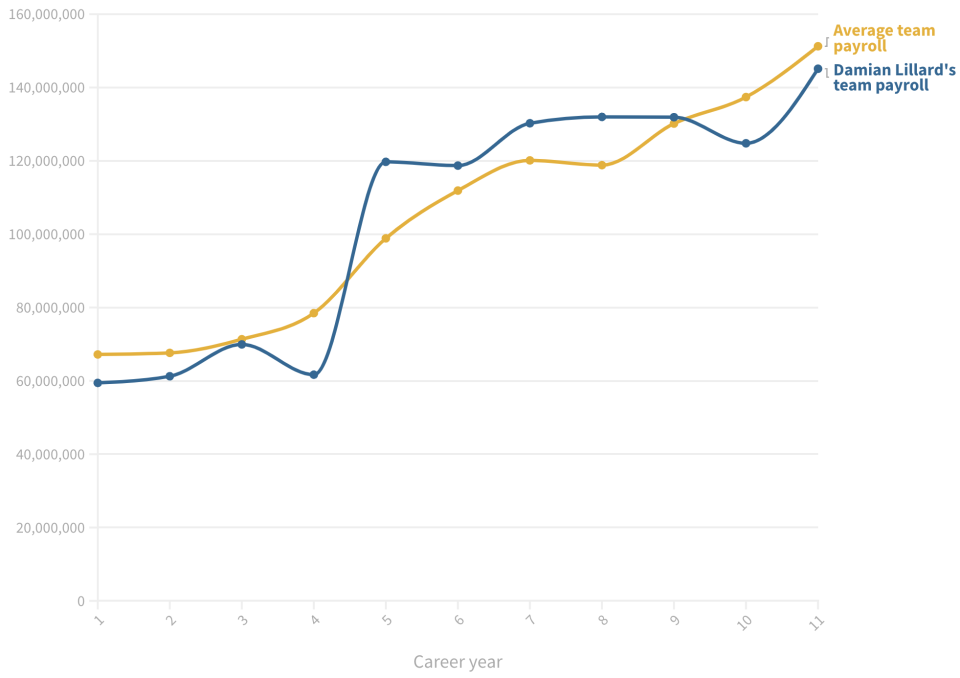
23. Gary Payton
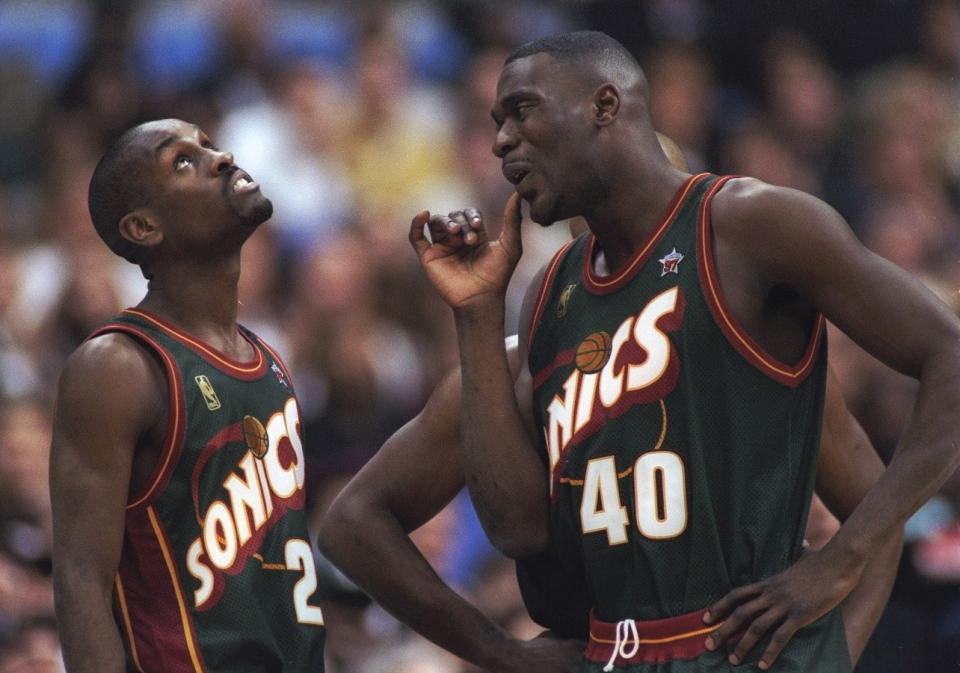
Brian Bahr/Allsport
Team salary expenses: 1.91 percent less than league average
Salary expenses in championship season: 3.98 percent less than league average
Another all-time point guard whose teams have been a bit stingy, Gary Payton was only on six teams in his career that ranked higher than 10th in player salary expenses, with none of those even cracking the Top 6.
When the Seattle SuperSonics were competing for championships in the ’90s, they did do a bit more spending, ranking Top 8 in player salaries from 1994-95 through 1997-98.
The Sonics team that reached the Finals in 1995-96 was seventh in player salaries, with Payton making $2.8 million (82nd in the NBA) Detlef Schrempf at $5.0 million (first on the team, 14th in the NBA), Sam Perkins earning $4.0 million (second on the team, 29th in the NBA) and Shawn Kemp, the team’s second star, at $3.0 million (tied for 70th in the NBA).
Seattle got insane value out of Payton and Kemp that year, considering they were both 2nd Team All-NBA in 1995-96 while not even making Top-50-player money that season.
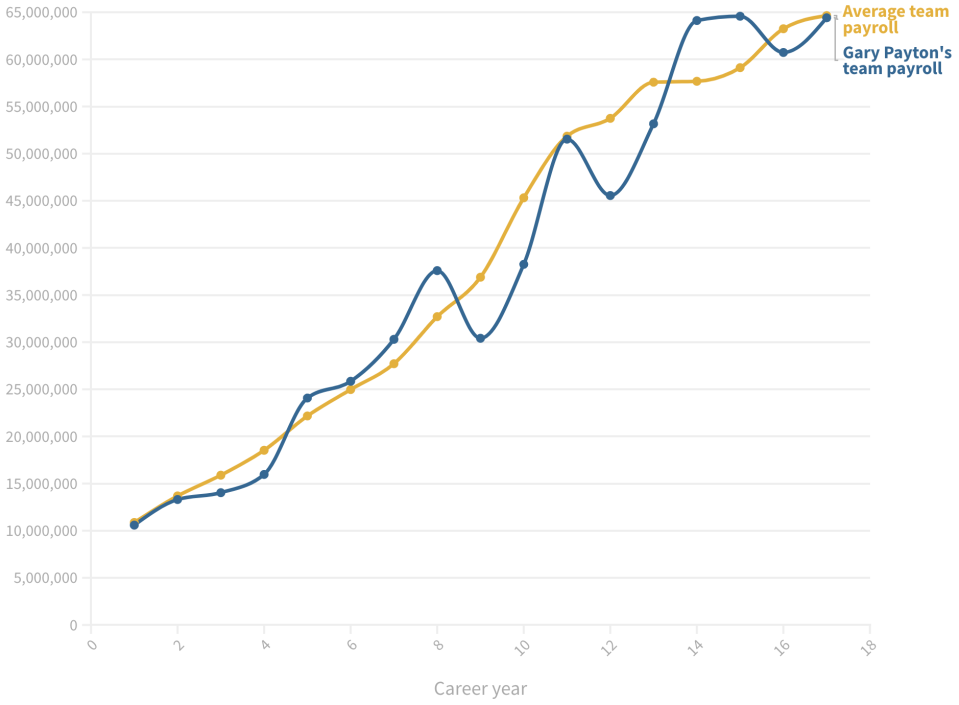
BONUS: Michael Jordan
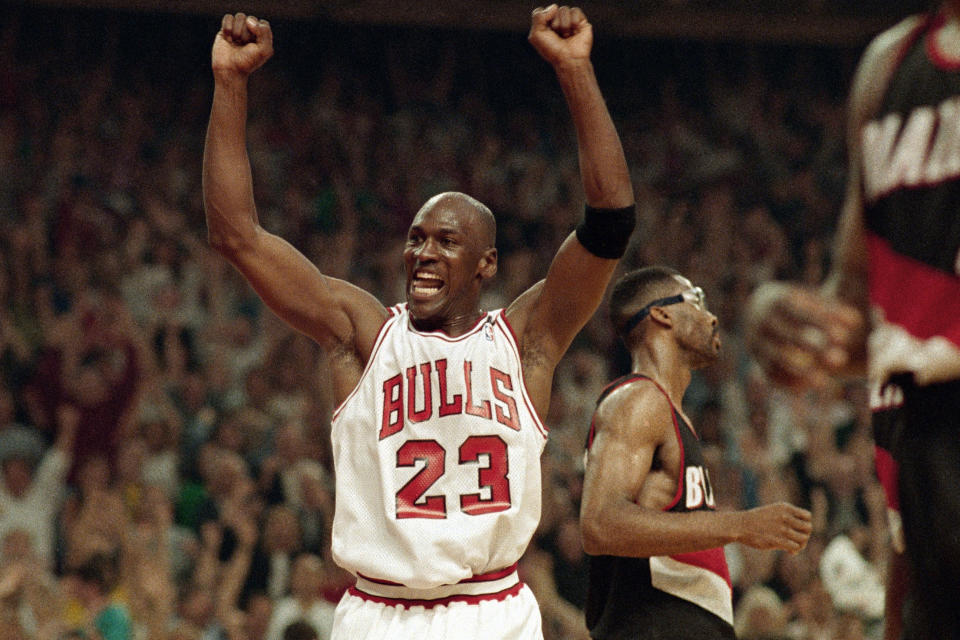
AP Photo/John Swart, File
Team salary expenses: 22.91 percent more than league average since the 1990-91 season
Salary expenses in championship seasons: 37.31 percent more than league average
Since every NBA-related research project is more interesting when including Michael Jordan, we decided to look up how much His Airness’ teams spent in relation to the rest of the league even though we only have salary info from 1990 onwards.
In that second half of MJ’s career, his teams paid 22.9 percent more than the league average in player salaries, which would put him at No. 1 in this exercise.
That does come with a bunch of asterisks, one of which we already mentioned above. The second asterisk is the big salary spending of his Chicago teams comes from his massive salary from 1996-97 and 1997-98 seasons – not from the help around him.
In 1997-98, for example, Jordan’s final year with the Chicago Bulls, Chicago ranked first in player salary expenses (for the second year in a row). In that campaign, Jordan made $33.1 million, by far the highest amount of money paid to a player that season league-wide. In second was Patrick Ewing ($20.5 million) and in third was Horace Grant ($14.3 million). Even Shaquille O’Neal was at just $12.9 million that year, No. 4 in the league.
In comparison to Bulls players, though, Scottie Pippen made $2.8 million that season (sixth on the team in salary), Dennis Rodman made $4.5 million (third on the team) while Toni Kukoc and Ron Harper made $4.6 million (tied for second on the team).
So yes, the Bulls were spending way more than everyone else, but it was in order to pay Jordan the astronomical amount of money he deserved after many years underpaid. They weren’t paying huge amounts of money to build a super team around him.


 Yahoo Sports
Yahoo Sports 
